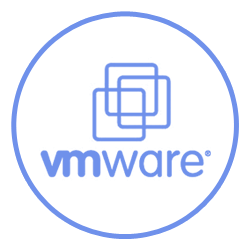-
Welcome to My Website
This is a text box. Write your own content here. This is an excellent place for you to add a paragraph.
Netway Support Center
เราพร้อมบริการคุณ ตลอด 24 ชั่วโมง
Payment & Invoices
Products Knowledge










Zendesk




Other Cloud Products
Technical Knowledge
Website/Install Application & FTP
Linux Technical Knowledge
Windows Technical Knowledge
Database
Blog list (8)
install ssl on nessus server
install ssl on nessus server กรณีใช้ ssl free ของ Let's Encrypt ให้ไปที่ https://www.sslforfree.com/ จากนั้นให้ระบุ domain : nessus.ezyadmin.com จากนั้นให้กด Create Free SSL Certificate จะมีขั้นตอนการ Validation domain ให้เราเลือกการแบบ Manual Verifivation (DNS) จากนั้นให้นำค่าที่ได้ไป add ที่ dns zone ของโดเมน ezyadmin.com เมื่อทำการ add ค่า dns zone แล้วสามารถ ทำการตรวจสอบได้ในข้อ 3. Verify TXT records .... เมื่อทำการ Verify TXT records ได้แล้วให้ทำการ Click Download SSL Certificate จะได้ certificate ออกมา ซึ่งจะมีอยู่ 3 ส่วนประกอบไปด้วย Certificate Private Key CA Bundle (Contains Root And Intermediate Certificates) จากนั้นให้ทำการ login ssh เข้าไปที่เครื่อง แล้วนำค่าที่ได้มาใส่บนเครื่องโดย นำค่า Certificate ที่ได้ไปใส่ในไฟล์ /opt/nessus/com/nessus/CA/servercert.pem นำค่า Private Key ที่ได้ไปใส่ในไฟล์ /opt/nessus/var/nessus/CA/serverkey.pem นำค่า CA Bundle (Contains Root And Intermediate Certificates) ที่ได้ไปใส่ในไฟล์ /opt/nessus/var/nessus/CA/serverkey.pem จากนั้นให้ทำการ restart service nessusd ก็สามารถเรียกให้งาน https ได้แล้วครับ
วิธีแก้ไขปัญหาไฟล์ /script/upcp หายและไม่สามารถทำการ Update cPanel ได้
ปัญหา ไม่สามารถทำการ Update cPanel และไม่สามารถใช้งานทุก Service ได้ Error ที่พบ [root@system ~]# /scripts/upcp --force -bash: /scripts/upcp: No such file or directory วิธีการแก้ไขปัญหา 1. ให้ทำการตรวจสอบ Version cPanel ที่ใช้งานอยู่ปัจจุบัน [root@system ~]# more /usr/local/cpanel/version 2. เข้าไปที่ part : /usr/local/cpanel/bin [root@system ~]# cd /usr/local/cpanel/bin 3. ทำการ Download file ที่ใช้ในการ Update โดยต้องทำการ Download file ให้ตรงกับ Version ที่ใช้งานจริงบนเครื่องตามข้อมูลที่ได้จากข้อ 1 [root@system ~]# wget http://httpupdate.cpanel.net/cpanelsync/11.xx.x.xx/cpanel/scripts/updatenow.static.bz2 4. ทำการ Extract file ที่ทำการ Download มาก่อนหน้านี้ [root@system ~]# bzunzip2 updatenow.static.bz2 5. ทำการเปลี่ยน Permission file ให้ถูกต้อง [root@system ~]# chmod 655 updatenow.static 6. ทำการ Run sync file install [root@system ~]# /usr/local/cpanel/bin/updatenow.static --sync หลังจากทำการ Run sync เรียบร้อยแล้วจะสามารถกลับมาใช้งานได้ปกติทั้งหมดให้ระมัดระวังในการเลือก Version ในการ Download file มาให้ถูกต้อง
วิธีการ Renew Free SSL Let's encrypt บนเครื่อง Zabbix และ Ezyadmin
วิธีการ Renew Free SSL Let's encrypt บนเครื่อง Zabbix และ Ezyadmin 1. ให้ดำเนินการ Generate SSL โดยไปที่ Website : https://www.sslforfree.com/ 2. ดำเนินการใส่ข้อมูล URL ที่ต้องการติดตั้ง Free ssl ลงไป และดำเนินการ Click : Manual Verification 3. จากนั้นให้ทำการสร้างไฟล์เพื่อยืนยันตัวตนในการใช้งาน Free ssl 3.1 เครื่อง ezazbweb1.ezyadmin.com (Zabbix server) ให้ทำการสร้างไฟล์ไว้ที่ >>> /var/www/html/.well-known/acme-challenge/ 3.2 เครื่อง netway.ezyadmin.com (eza05.netway.co.th) ให้ทำการสร้างไฟล์ไว้ที่ >>> /home/netway/app/frontend/semaphore/clientsite/.well-known/acme-challenge/ หลังจากทำการสร้างไฟล์ยืนยันตัวตนเรียบร้อยแล้วให้ทำการ Verify โดย Click : Download SSL Certtificate 4. หากดำเนินการยืนยันตัวตนสำเร็จระบบจัด Generate Key , Certificate , Intermediate CA ให้โดยอัตโนมัติ จากนั้นให้ทำการ Copy ข้อมูลที่ได้ไปไว้ในแต่ละส่วนให้ถูกต้อง 4.1 เครื่อง ezazbweb1.ezyadmin.com (Zabbix server) ให้ทำการสร้างไฟล์ไว้ที่ - Key >>> /etc/httpd/ssl/private/ezazbweb1.key - Certificate >>> /etc/httpd/ssl/private/ezazbweb1.crt - Intermediate CA >>> /etc/httpd/ssl/private/ezazbweb1.ca-bundle 4.2 เครื่อง netway.ezyadmin.com (eza05.netway.co.th) ก่อนอื่นให้เข้าไปที่ Container บนเครื่อง eza05.netway.co.th ก่อนจากโดยใช้คำสั่ง docker exec -it appserver /bin/bash จากนั้นให้ทำการแก้ไขข้อมูลที่ - Key >>> /app/backend/lib/ssl2/netway_ezyadmin.key - Certificate >>> /app/backend/lib/ssl2/netway_ezyadmin.cert - Intermediate CA >>> /app/backend/lib/ssl2/netway_ezyadmin.ca **** หลังจากนั้นให้ทำการ restart : pm2 restart 0 ****
วิธีการตั้งค่า System filter และ Auto BCC บน cPanel
ปัญหา เนื่องจากการตั้งค่า System filter path default cPanel ก่อนหน้านี้นั้นเมื่อทำการ Save Exim configuration จะส่งผลให้ค่า Config filter ที่มีการสร้างไว้ทั้งหมดหายไปทันที วิธีการตั้งค่า System filter Block domain 1. หากต้องการตั้งค่า System block domain ให้ดำเนินการ Config ที่ไฟล์ /usr/local/cpanel/etc/exim/sysfilter/options/netway_filters [root@system ~]# nano -w /usr/local/cpanel/etc/exim/sysfilter/options/netway_filters 2. ตัวอย่างการเพิ่ม Rule System block domain if ("$header_from:" contains "qqq.com") then seen finish endif 3. หลังจากแก้ไข Config ที่ต้องการเรียบร้อยแล้วให้ทำการ Buildeximconfig ทุกครั้ง [root@system ~]# /scripts/buildeximconf วิธีการตั้งค่า Auto BCC Email 1. หากต้องการตั้งค่า Auto BCC Email ให้ดำเนินการ Config ที่ไฟล์ /usr/local/cpanel/etc/exim/sysfilter/options/netway_filters [root@system ~]# nano -w /usr/local/cpanel/etc/exim/sysfilter/options/netway_filters 2. ตัวอย่างการเพิ่ม Auto BCC Email if $sender_address contains useremail@domain.com (ชื่อ Account Email ที่ต้องการ Auto BCC) then unseen deliver bccto@domain.com (ชื่อ Account ปลายทางที่ต้องการให้ได้รับ Auto BCC) endif กรณีต้องการ Auto BCC ไปที่หลายๆปลายทางสามารถทำการเพิ่มบรรทัดunseen deliver ได้ตามความต้องการ 3. หลังจากแก้ไข Config ที่ต้องการเรียบร้อยแล้วให้ทำการ Buildeximconfig ทุกครั้ง [root@system ~]# /scripts/buildeximconf หมายเหตุ : หากต้องการลบข้อมูล Auto BCC ให้ทำในรูปแบบนี้ตามข้อ 1 เหมือนการเพิ่ม Auto BCC นะครับ
Install Zabbix_proxy on Windows server 2008,2012
Install Zabbix_proxy on Windows serverขั้นตอนการติดตั้ง Zabbix_proxy1. ทำการ Remote desktop เข้าที่ Windows server เพื่อทำการติดตั้ง VirtualBox2. ทำการ Download VirtualBox เพื่อใช้ในการสร้าง Ubuntu server สำหรับการติดตั้ง Zabbix_proxy โดยสามารถทำการ Download ได้ที่ https://download.virtualbox.org/virtualbox/6.0.14/VirtualBox-6.0.14-133895-Win.exe3. หลังจากทำการติดตั้ง VirtualBox เรียบร้อยแล้วให้ทำการสร้าง OS Ubuntu server ขึ้นมา 4. เมื่อทำการสร้าง Ubuntu server เรียบร้อยแล้วให้ทำการแก้ไข Config Network ให้ถูกต้อง 4.1 แก้ไขที่ VirtualBox โดยไปที่ Setting >> Network โดยให้ทำการแก้ไขที่Attached to : Bridged Adapter Name : เลือก Network ที่เครื่อง Windows server ใช้งาน 4.2 ทำการ access เข้าที่ Ubuntu server ที่ทำการสร้างขึ้นมาเพื่อแก้ไขไฟล์ Config network [root@ubuntu ~]# cp -a /etc/netplan/50-cloud-init.yaml /etc/netplan/50-cloud-init.yaml.bak [root@ubuntu ~]# nano -w /etc/netplan/50-cloud-init.yaml # This file is generated from information provided by# the datasource. Changes to it will not persist across an instance.# To disable cloud-init's network configuration capabilities, write a file# /etc/cloud/cloud.cfg.d/99-disable-network-config.cfg with the following:# network: {config: disabled}network: ethernets: enp0s3: addresses: [192.168.100.147/24] ใส่ ip server ที่ต้องการโดยจะต้องมี /24 เพื่อกำหนดเป็น ip เดียว gateway4: 192.168.100.2 ระบุ gateway ให้ถูกต้อง dhcp4: no nameservers: addresses: [8.8.8.8,8.8.4.4] optional: true version: 2 [root@ubuntu ~]# apt install net-tools[root@ubuntu ~]# netplan apply[root@ubuntu ~]# ifconfig 5. ทำการ Download package เพื่อใช้ในการติดตั้ง [root@ubuntu ~]# wget https://repo.zabbix.com/zabbix/4.0/ubuntu/pool/main/z/zabbix-release/zabbix-release_4.0-3+bionic_all.deb[root@ubuntu ~]# dpkg -i zabbix-release_4.0-3+bionic_all.deb[root@ubuntu ~]# apt update 6. ทำการติดตั้ง Zabbix_proxy [root@ubuntu ~]# apt install zabbix-proxy-mysql 7. ทำการสร้าง Zabbix Proxy database โดยให้ทำการติดตั้ง mariadb-server ก่อน[root@ubuntu ~]# apt install mariadb-server[root@ubuntu ~]# systemctl enable mariadb && systemctl start mariadb[root@ubuntu ~]# systemctl status mariadb 8.ทำการ Run mysql_secure_installation และกำหนด root database password [root@ubuntu ~]# mysql_secure_installation 9.ทำการสร้างฐานข้อมูลสำหรับ Zabbix_proxy และกำหนด privileges ในการใช้งาน Database [root@ubuntu ~]# mysql -u root -pEnter password: ทำการกรอก root database password ที่สร้างในขั้นตอนที่ 5MariaDB [(none)]> create database zabbix_proxy character set utf8 collate utf8_bin;MariaDB [(none)]> grant all privileges on zabbix_proxy.* to zabbixuser@localhost identified by "Password";MariaDB [(none)]> flush privileges; 10.ทำการ Import schema [root@ubuntu ~]# zcat /usr/share/doc/zabbix-proxy-mysql/schema.sql.gz | mysql -u zabbixuser zabbix_proxy -pEnter password: ทำการกรอก root database password ที่สร้างในขั้นตอนที่ 5 11.ทำการ Config zabbix_proxy[root@ubuntu ~]# nano -w /etc/zabbix/zabbix_proxy.confServer=< ใส่ IP ของ zabbix server Ex. 203.78.103.9>Hostname=<ใส่ชื่อ Zabbix-proxy ที่เราต้องการจะสร้าง>DBName=<ใส่ข้อมูล Database name ก่อนหน้านี้เรากำหนดเป็น zabbix_proxy >DBUser=<ใส่ข้อมูล Database User ก่อนหน้านี้เรากำหนดเป็น zabbixuser>DBPassword=<ทำการกรอก root database password ที่สร้างในขั้นตอนที่ 5> 12. หลังจากทำการ Config zabbix_proxy เรียบร้อยแล้ว ให้ทำการติดตั้ง csf firewall เพื่อทำการเปิด Port 10050-10052 [root@ubuntu ~]# cd /usr/src [root@ubuntu ~]# rm -fv csf.tgz [root@ubuntu ~]# wget https://download.configserver.com/csf.tgz [root@ubuntu ~]# tar -xzf csf.tgz [root@ubuntu ~]# cd csf [root@ubuntu ~]# sh install.sh 13. ทำการ Allow port 10050-10052 [root@ubuntu ~]# nano -w /etc/csf/csf.conf # Allow incoming TCP portsTCP_IN = "20,21,22,25,53,80,110,143,443,465,587,993,995,10050,10051,10052" # Allow outgoing TCP portsTCP_OUT = "20,21,22,25,53,80,110,113,443,587,993,995,10050,10051,10052" 14. ทำการติดตั้ง Package พื้นฐานเพิ่มเติม [root@ubuntu ~]# apt install unzip[root@ubuntu ~]# apt install sendmail[root@ubuntu ~]# apt install libwww-perl[root@ubuntu ~]# apt install snmp 15. ทำการ Restart service zabbix_proxy [root@ubuntu ~]# systemctl enable zabbix-proxy[root@ubuntu ~]# systemctl start zabbix-proxy Add Zabbix_proxy to Zabbix_server 1. Go to Zabbix_server dashboard >> Administrator >> Proxies >> Create proxy Add Zabbix_agent to Zabbix_proxy 1. เมื่อทำการติดตั้ง Zabbix_agent บนเครื่อง Local ที่ต้องการให้ Zabbix_proxy monitor เรียบร้อยแล้วให้ทำการ Config zabbix_agent [ local server ~]# nano -w /etc/zabbix/zabbix_agentd.confServer=<ใส่ ip zabbix_proxy Ex.192.168.100.150>ServerActive=<ใส่ ip zabbix_proxy Ex.192.168.100.150>Hostname=<ใส่ Hostname ของเครื่อง Local server ที่เราต้องการ> 2. ทำการ Restart service zabbix_agent [root@system ~]# systemctl restart zabbix-agent 3. หลังจากทำการ Config zabbix_agent เรียบร้อยแล้วให้ดำเนินการ add server บน Zabbix_server dashboard Go to Zabbix_server dashboard >> Configuration >> Hosts >> Create host
-
Domain
-
Hosting
-
Cloud & Managed
-
SSL
-
Email
- เรียนรู้เพิ่มเติม
- Microsoft 365 รุ่นต่างๆ
- Microsoft 365 สำหรับธุรกิจ
- Microsoft 365 สำหรับใช้งานที่บ้าน
- ทดลองฟรี
- G Suite
- เทคนิคลดต้นทุนอีเมล Microsoft 365 มากกว่า 28%
- เทคนิคลดต้นทุนอีเมล G Suite มากกว่า 19%
- Zimbra-Based Email
- Traditional Email by cPanel
- Physical to Cloud Migration
- Exchange Server to Microsoft 365 Migration
- G Suite to Microsoft 365 Migration
- Microsoft 365 to G Suite Migration
- Cloud to Cloud Migration
-
Microsoft
-
Google
-
Marketing
-
Others
-
Blog
-
Microsoft Teams
-
microsoft-365-business-premium
-
test-slide
-
Order
-
Promo






















.png)



.png)














